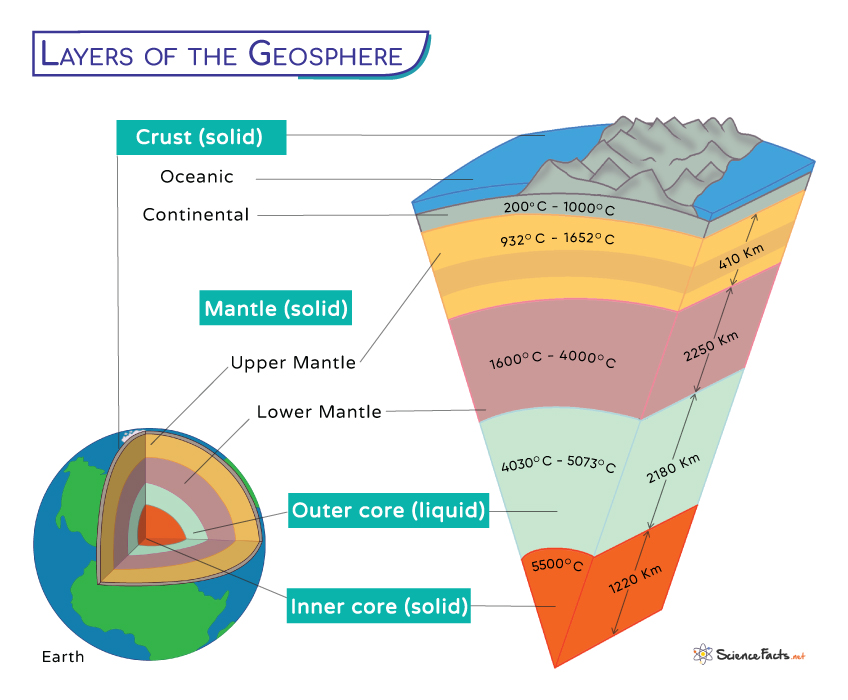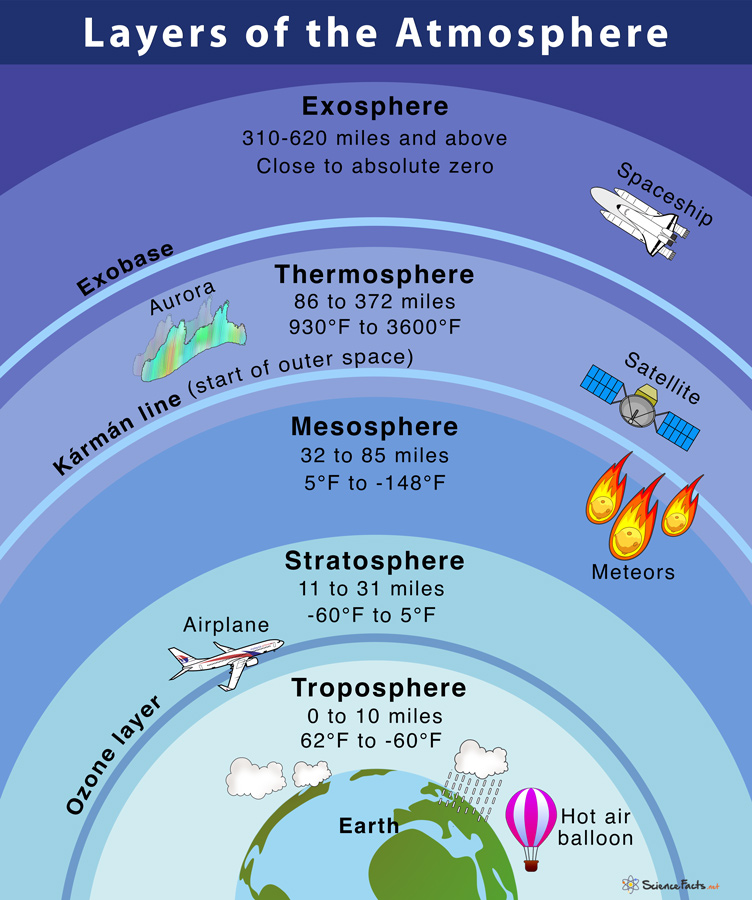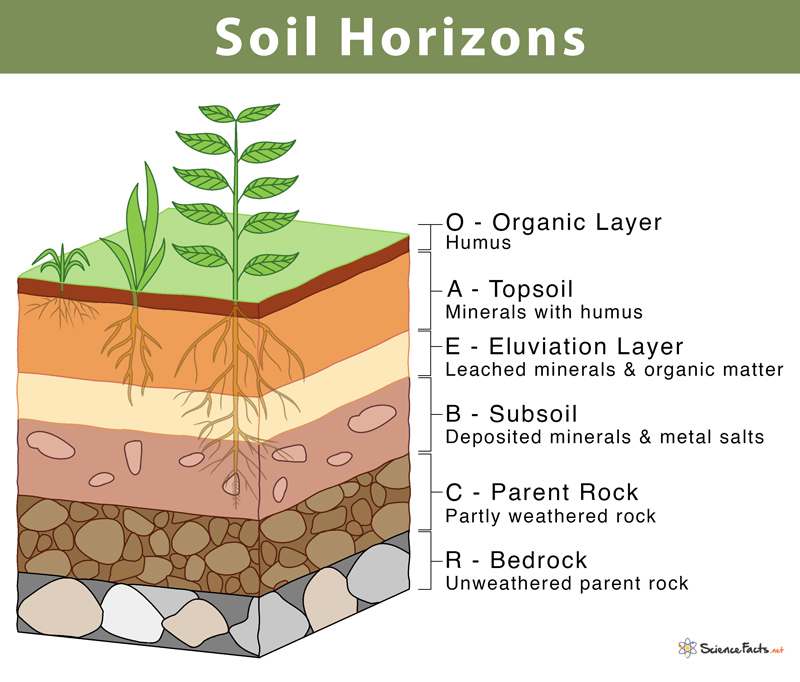Geosphere
The geosphere refers to the solid part of Earth, encompassing the rocks, minerals, towering landforms like mountains, to grains of sand. It also includes the oceanic crust, the Earth’s molten rock interior, fossilized remains, and skeletons of once-living organisms.
The crust can be continental or oceanic crust. The continental crust forms the landmasses we inhabit. In contrast, the oceanic crust lies beneath the vast expanses of the world’s oceans. The thickness of the crust ranges from about 5 kilometers (3 miles) beneath the ocean floor to approximately 70 kilometers (43 miles) beneath some mountain ranges.
The geosphere thus extends from the Earth’s surface to its core, with distinct layers that vary in composition and physical properties. Despite being solid, the geosphere is highly dynamic, with its surface in constant motion. This movement creates continents, oceans, and different landforms through Plate Tectonics. Other geological processes include volcanic eruption, erosion, and landslides.
However, we continuously affect the geosphere by destroying mountains, constructing dams and reservoirs, and extracting materials from Earth’s crust.
Interaction with Hydrosphere, Atmosphere, Biosphere, and Cryosphere
Since the geosphere is not isolated, it interacts with other Earth systems, such as the hydrosphere, atmosphere, biosphere, and cryosphere.
| Types of Interaction | Examples |
|---|---|
| 1. Geosphere-Hydrosphere Interaction | Weathering and ErosionLandformsGroundwater |
| 2. Geosphere-Atmosphere Interaction | Volcanic ActivityWeathering |
| 3. Geosphere-Biosphere Interaction | Soil FormationNutrient CyclingBiological Weathering |
| 4. Geosphere-Cryosphere Interaction | GlaciationDeposition |
Why is the Geosphere Important
Geosphere is thus essential because it provides all living organisms with natural resources and places to live, grow, and survive. Without the geosphere, there will be only water on Earth.
Also, the interactions between the geosphere and other Earth systems are critical for maintaining the delicate balance that supports life on our planet. The dynamic exchange of energy, matter, and processes between these systems shapes the Earth’s landscapes, climates, and biodiversity.
Some of its crucial roles include:
1. Tectonic Plate Movements: The geosphere’s convective movements in the mantle drive the motion of tectonic plates on the Earth’s surface. The interaction of these plates leads to various geological features such as earthquakes, volcanoes, mountain ranges, and ocean basins.
2. Soil Formation: The geosphere contributes to soil formation by weathering rocks and minerals over time. Soil provides essential nutrients for plant growth, making it crucial for agriculture and sustaining ecosystems.
3. Resource Exploration: The geosphere contains valuable mineral resources such as coal, oil, natural gas, and metallic ores. Understanding an area’s geology helps locate and extract these resources sustainably.
4. Geological Time and Earth’s History: The study of the geosphere offers insights into the Earth’s geological history, helping scientists understand past environmental conditions, evolution, and mass extinctions.
By understanding these interactions, scientists can better predict the consequences of natural processes and human activities, helping us make informed decisions to preserve and sustain the health of our planet for future generations.
-
References
Article was last reviewed on Friday, November 3, 2023






